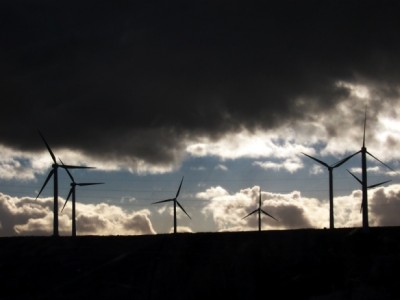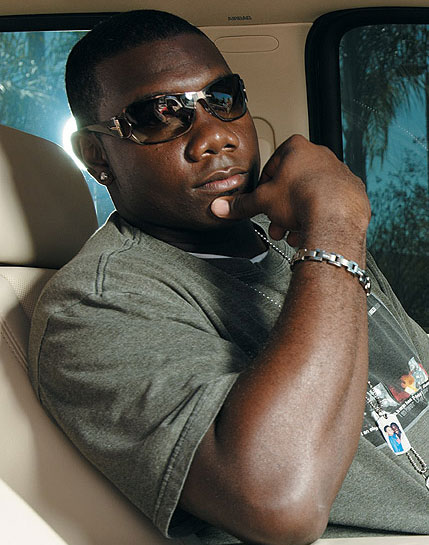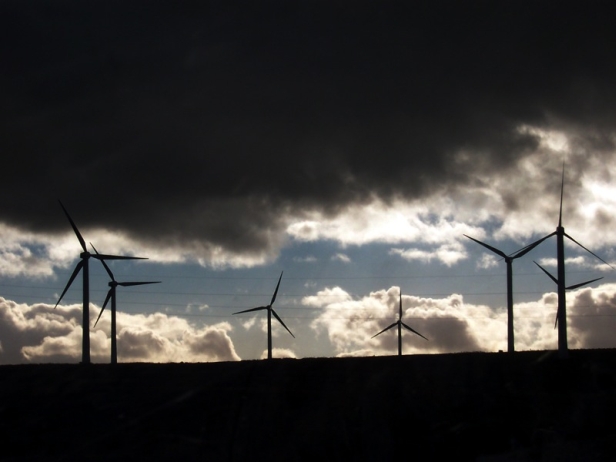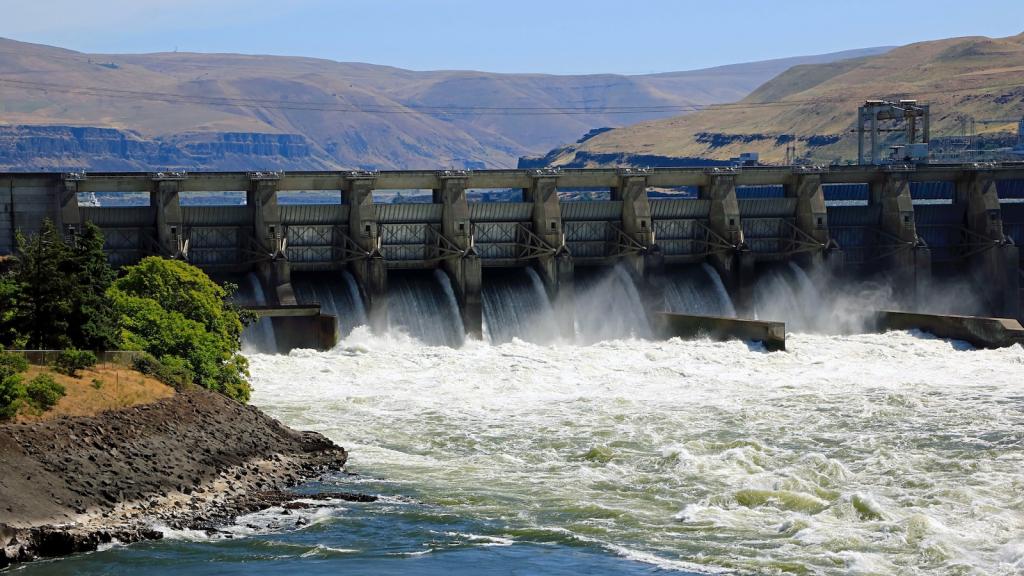 In January, Barack Obama stopped by the Cardinal Fastener & Specialty Co. in Bedford Heights, Ohio, to promote his economic-stimulus plan. The company, which has manufactured parts for bridges and machinery since 1968, began three years ago to make giant nuts and bolts to hold together wind turbines.
In January, Barack Obama stopped by the Cardinal Fastener & Specialty Co. in Bedford Heights, Ohio, to promote his economic-stimulus plan. The company, which has manufactured parts for bridges and machinery since 1968, began three years ago to make giant nuts and bolts to hold together wind turbines.
During his visit, Obama cited the factory as evidence that “a renewable energy economy isn’t some pie-in-the-sky, far-off future,” and touted his plans to double the production of renewable energy in three years and create millions of new jobs in the process.
But Cardinal Fastener CEO John Grabner joined other members of the renewable-energy sector in Washington this past week to tell lawmakers and administration officials that the renewable electricity standard (RES) proposals now moving ahead in Congress will not get the U.S. anywhere near the president’s goals.
Though they’re pleased to see a federal RES moving forward in Congress, leaders in the clean-energy industry say those plans are way too weak. If the proposals aren’t strengthened, the U.S. will lose jobs and economic opportunities to competitors abroad, people in the industry warn.
Clean-power advocates want an RES that requires 12 percent of power to come from renewables by 2012, and 25 percent by 2025. They say ambitious near-term goals are particularly vital.
“Setting that bar is critically important,” said Iowa Gov. Chet Culver (D), who came to Washington, D.C., on June 4 to lobby for a high renewable standard. “If we are serious about getting to 25 percent renewables by 2025, we have to put our country on a trajectory to get there. We can’t sell ourselves short by not shooting high enough.”
The Waxman-Markey climate and energy bill, which is moving through the House, would require only 6 percent renewables by 2012, and 20 percent by 2020. It would let 5 percent of the requirement be met through efficiency measures rather than actual new renewable capacity, and would let governors petition for a weaker standard if they believe their states can’t meet the target. The bill originally had a higher standard, but moderate Democrats negotiated it down.
A plan now under consideration in the Senate would require only 3 percent renewables from 2011 to 2013, and 15 percent by 2021, with up to a quarter of that allowed to be met through efficiency. And even that weak RES is likely to have a tough time passing in the Senate.
In recent weeks, the American Wind Energy Association, the Southern Alliance for Clean Energy, the Biomass Power Association, the Governors’ Wind Coalition, and other renewable-energy groups and associations have come forward to argue that the current proposals won’t help increase the growth of renewables. In fact, the goals for 2012 in the bills would just keep renewables on the path they’re already on, doing nothing to increase their share of the market, clean-energy advocates argue.
To help get Congress on the right track, renewables advocates descended on Capitol Hill on June 4, meeting with House Speaker Nancy Pelosi (D-Calif.) and Senate Majority Leader Harry Reid (D-Nev.), then hosting a press conference in the Capitol building. They were joined by Colorado Sen. Mark Udall (D) and Iowa Rep. Bruce Braley (D), who pledged to lead the push for a stronger RES.
“The leadership has told us that they understand what we’re saying in terms of the numbers,” said AWEA CEO Denise Bode. “We’re going to work really hard to make that happen.”
AWEA has been running a flurry of TV and print ads in the Washington area calling for a strong RES. The group spent $1.2 million on lobbying in the first quarter of 2009 — more than any other clean-energy entity, but far less than fossil-fuel interests.
The difference between the RES proposals in Congress and the RES the industry wants could be up to 70,000 jobs in the wind industry alone, AWEA estimates. The group also estimates that without an ambitious RES, 75 percent of jobs in the wind industry would be created outside the U.S. by 2020, leading to both Europe and China having more wind jobs than the U.S.
“Without a strong RES, the wind industry will lose half of its production and half of its workforce,” said Don Furman, senior vice president at the wind company Iberdrola and president of AWEA.
The Southern Alliance for Clean Energy paints an even bleaker picture. Its analysis of the Waxman-Markey bill estimates that the original version would have created 297,000 new jobs in renewables by 2020, but the current version “barely opens the hiring office.” The group doesn’t believe the bill would stimulate any job growth beyond what’s already on track to occur.
As for Cardinal Fastner, Grabner estimates that his company’s staff could grow ten times in size by 2025 if a 25 percent RES is signed into law. While the firm still anticipates growth under the proposed RES, it’s hoping for much more. It is currently deciding whether to branch out and build more factories in places like Colorado, where turbine-manufacturing company Vestas will soon have four new plants.
Obama’s appearance at the factory helped make the company a poster boy for green jobs — literally. Cardinal Fastener employees are featured in AWEA’s print and TV ads, with the company touted for rebuilding the Amercian economy “one bolt at a time.” And the Cardinal Fastener website proudly displays photos of Obama holding a big bolt.
Grabner is optimistic that Obama will flex his muscle and help get a stronger RES in place to meet the goals he laid out during his January visit. “I have a feeling he’s going to weigh in at some point and give his message,” Grabner told Grist. “I would think he could be that kind of guy.”
—–
Watch Cardinal Fastener employees at work in this AWEA ad:



